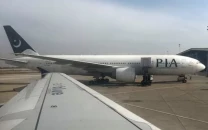Colonial master and the tale of two countries
Post-WWII both Pakistan and the Philippines took a similar trajectory

Geographically I can draw no commonality between the Philippines and Pakistan as the former is an island country located in the western Pacific with over 7,000 islands to protect as its archipelago. There are three main island groups of the Philippines — Luzon in the north occupied by the Tagalog speaking people whose roots go back to Southeast Asia; and Mindanao and Sulu archipelago occupied by Muslim Moros who have roots common to the Muslims of Indonesia and Malaysia. It is in the country’s southern island groups where the Philippines faces terrorism associated with Muslims and a permanent insurgency. When I compared the geographic settings of both Pakistan and the Philippines, I was reminded of the first lesson of geopolitics — location matters. Our provinces of K-P and Balochistan also face similar challenges and this explains the second lesson of geopolitics — no matter how confident states feel in defeating evil ideologies given the right conditions and circumstances such ideologies would again raise their ugly heads. Both countries have terrorist related ongoing insurgencies that they fight.
Another commonality between the two is that we have the same colonial master — the United States. The Philippines actually has the unique distinction of being the only country that the US deliberately ventured out to conquer and ended up occupying it. The US didn’t repeat the experiment until a hundred years — in Iraq. Americans went into the Philippines at the start of the 19h century to undo the Spanish occupation of the country. But when the Philippine insurgents had done their job, they turned their guns against their new masters. When in July 1902, the American President declared the end of the war, over 200,000 natives and 4,000 Americans had died in the war.
Our colonial master before independence was Great Britain; and had it not been for the 2.5 million Indian soldiers that fought for the British raj and stopped the Japanese in Burma, we might have been further colonised by the Japanese. The Japanese invaded the Philippines and forced American troops under General Douglas MacArthur to withdraw to Australia. Although, he later returned to defeat the Japanese army for which he is still considered as a hero by many Filipinos who think he saved them from the butchery of Japanese occupation. Indians I guess should be equally grateful to the British Field Marshal William Smith who commanded the Fourteenth Army in Burma and saved us from a similar fate.
Post-WWII both Pakistan and the Philippines took a similar trajectory. Upwards for a few decades and downwards thereafter. Both became undeclared American colonies. We entrenched ourselves in alliance with Americans through CEATO and SENTO and like the Philippines preferred to have a pro- American defence and foreign policy. The Philippines strategic significance to the US has been its location as it dominates the eastern edge of the South China Sea and Pakistan’s strategic significance to the US is no secret as we have fought for the last forty years on their side on our western borders.
As the undeclared defence and strategic partners of the US, both the Philippines and Pakistan were recipients of American military and economic aid. The Philippines received $200 million US military aid annually as long as it allowed Americans to keep the Clark and Subic Bay Bases in the Philippines. As soon as it closed those in the 90s the aid came down to $35 million and eventually to nothing. Pakistan’s story of receiving conditional economic and military aid from the US is quite similar.
There is a political similarity between the two countries either. In South East Asia, Lee Kuan Yee created a name for himself. So did Ferdinand Marcos of the Philippines who ruled it for over 20 years. Marcos can easily be considered as an inverse of Lee Kaun Yee for the bribery, cronyism and ruin that he left behind, bankrupted the country and brought in fashion and democratised corruption. Not just this but he created a dysfunctional country that was poverty stricken with huge slums and an unlimited class divide. To top it all both the husband and his wife stole hundreds of billions of dollars of the country’s wealth. I don’t want to name Marcos’ competitor families in Pakistan but we all know what this country has been subjected to by the dynastic politics.
Those who have read Jhon Perkins’ Confessions of an Economic Hit Man may have similar may have been, like me, thinking as to why countries strategically significant to the US end up having rulers that loot and plunder the country. Is it because the US wants the continuity of its status of being the colonial master of these countries? Why despite being American allies and partners for many decades do these countries end up being the poorest of the lot? The Philippines is the poorest of the South East Asian states and no wonder 76% of its GDP goes to 40 richest families. I am not sure about the statistics in Pakistan. In any case the records are hardly ever made public in this country. So, why do countries that extend strategic help and partnership to the US end up getting poor and heavily indebted? If being an ally and partner of the US has thrown Pakistan under a debt of over $130 billion, is this master-slave relationship with our colonial master worth keeping?
The Philippines national security nightmare today is its accessibility to the hydrocarbon reserves in the South China Sea and also the lack of access to its existing fisheries. And currently China’s aggressive South China Sea posture leaves the Philippines with no choice but to again look up to American patronage — reliance on the very economic hit men that made the country what it is today — poor and dysfunctional.
Pakistan’s national security nightmare is its economic degradation and its impact on its nuclear assets. Many scholars have been warning about how important is the political stability, as no economic stability can stem under political chaos. We as a nation still have time to reflect on what we are doing to our country. The whole exercise of drawing a comparison between the Philippines and Pakistan is for a simple reason. When the child is not studying well you change the tutor, when the cook is not cooking well you change the cook. With apologies to all long-married people if the marriage is not working well, you break the marriage. What good has happened to Pakistan under the patronage of its colonial master? It would take an exceptional leadership to take up this question and debate it in parliament. And the day that happens, Pakistan will break the shackles of slavery by ending this master-slave relationship which has only made it politically and economically unstable and insecure.
Published in The Express Tribune, April 28th, 2024.
Like Opinion & Editorial on Facebook, follow @ETOpEd on Twitter to receive all updates on all our daily pieces.
















COMMENTS
Comments are moderated and generally will be posted if they are on-topic and not abusive.
For more information, please see our Comments FAQ